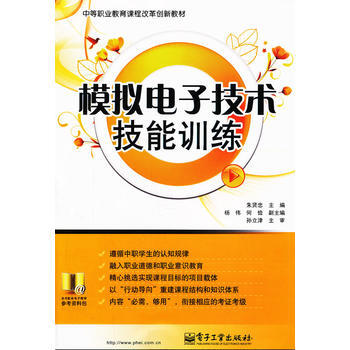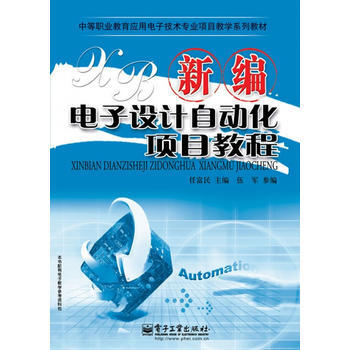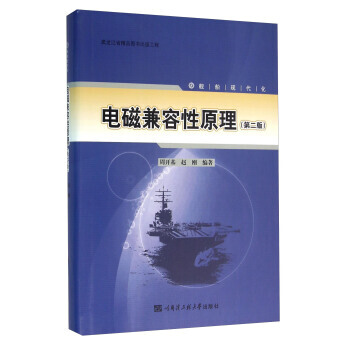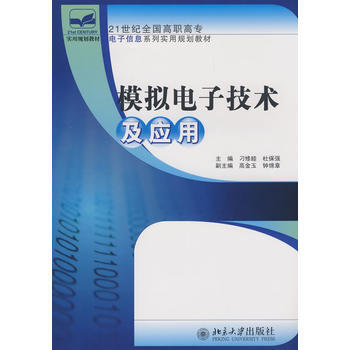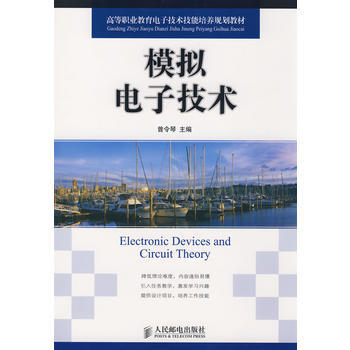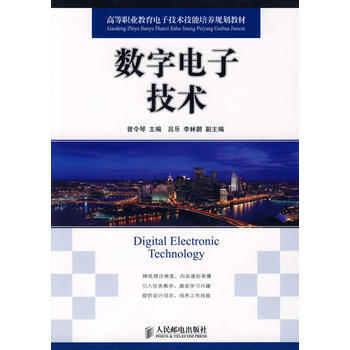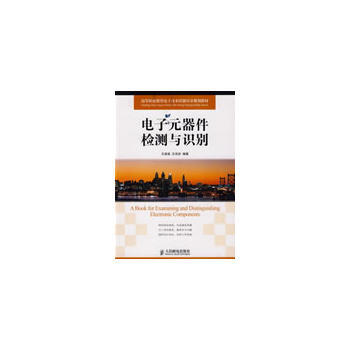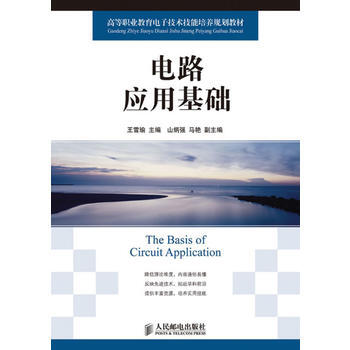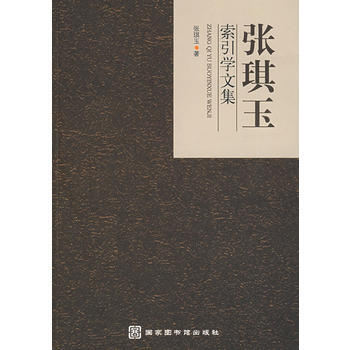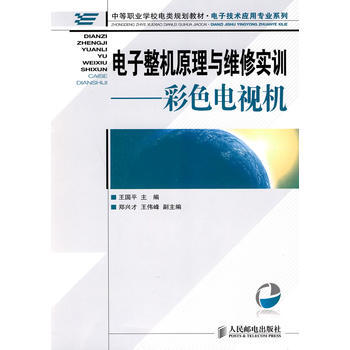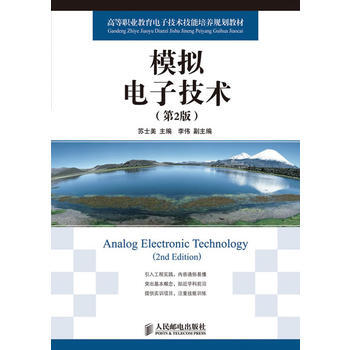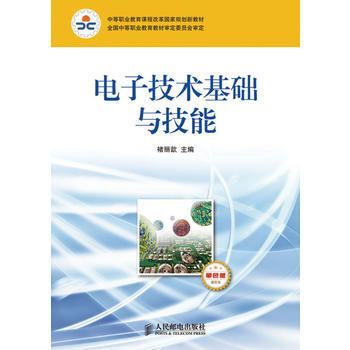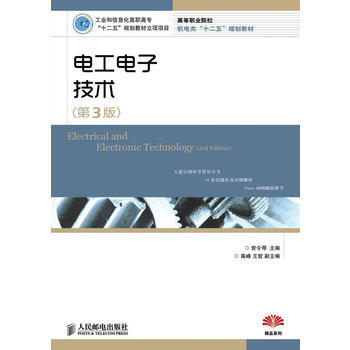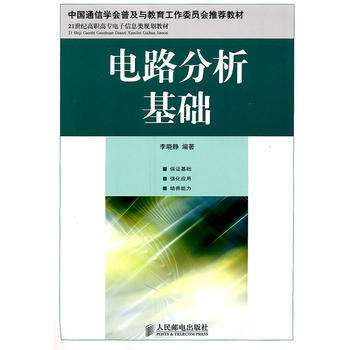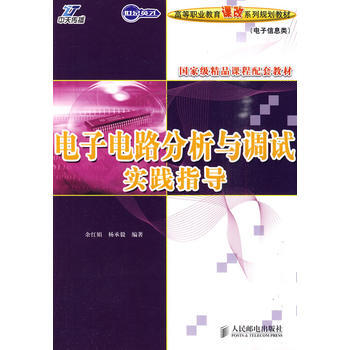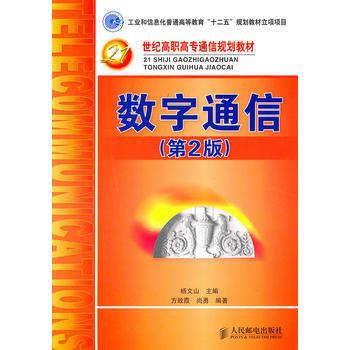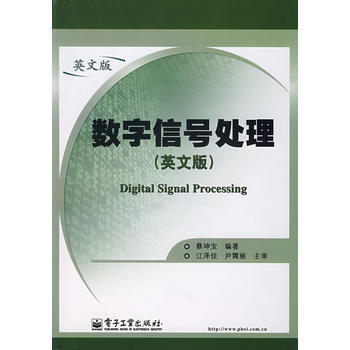

具體描述
基本信息
書名:數字信號處理(英文版)
定價:39.80元
作者:蔡坤寶著
齣版社:電子工業齣版社
齣版日期:2007-08-01
ISBN:9787121047633
字數:999600
頁碼:392
版次:1
裝幀:平裝
開本:
商品重量:0.640kg
編輯推薦
內容提要
本書係統地闡述瞭數字信號處理所涉及的信號與係統分析和係統設計的基本理論、基本分析與設計方法、基本算法和處理技術。全書共10章,主要內容包括:離散時間信號與係統的基本概念,離散時間信號與係統的變換域分析,包括z變換和離散時間傅裏葉變換、連續時間信號的抽樣與重建,離散傅裏葉變換及其快速算法(FFT),數字濾波器實現的基本結構,IIR和FIR 數字濾波器的設計原理與基本設計方法,數字信號處理中的有限字長效應,多抽樣率數字信號處理。本書配有多媒體電子課件、英文版教學大綱、習題指導與實驗手冊。
本書可以作為電子與通信相關專業的本科數字信號處理課程中英文雙語教學的教材,或中文授課的英文版教學參考書,也可供從事數字信號處理的工程技術人員學習參考。本書尤其適閤初步開展數字信號處理課程中英文雙語授課的教師與學生選用。
目錄
1 Introduction
1.1 What Is a Signal
1.2 What Is a System
1.3 What Is Signal Processing
1.4 Classification of Signals
1.4.1 Deterministic and Random Signals
1.4.2 Continuous-Time and Discrete-Time Signals
1.4.3 Periodic Signals and Nonperiodic Signals
1.4.4 Energy Signals and Power Signals
1.5 Overview of Digital Signal Processing
2 Discrete-Time Signals and Systems
2.1 Discrete-Time Signals: Sequences
2.1.1 Operation on Sequences
2.2 Basic Sequences
2.2.1 Some Basic Sequences
2.2.2 Periodicity of Sequences
2.2.3 Representation of Arbitrary Sequences
2.3 Discrete-Time systems
2.3.1 Classification of Discrete-Time systems
2.4 Time-Domain Representations of LTI Systems
2.4.1 The Linear Convolution Sum
2.4.2 Interconnections of LTI Systems
2.4.3 Stability Condition of LTI systems
2.4.4 Causality Condition of LTI systems
2.4.5 Causal and Anticausal Sequences
2.5 Linear Constant-Coefficient Difference Equations
2.5.1 Recursive Solution of Difference Equations
2.5.2 Classical Solution of Difference Equations
2.5.3 Zero-Input Response and Zero-State Response
2.5.4 The Impulse Response of Causal LTI Systems
2.5.5 Recursive Solution of Impulse Responses
2.5.6 Classification of LTI Discrete-Time Systems
Problems
3 Transform-Domain Analysis of Discrete-Time Signals and Systems
3.1 The z-Transform
3.1.1 Definition of the z-Transform
3.1.2 A General Shape of the Region of Convergence
3.1.3 Uniqueness of the z-Transform
3.2 Relation Between the ROCs and Sequence Types
3.3 The z-Transform of Basic Sequences
3.4 The Inverse z-Transform
3.4.1 Contour Integral Method
3.4.2 Partial Fraction Expansion Method
3.4.3 Long Division Method
3.4.4 Power Series Expansion Method
3.5 Properties of the z-Transform
3.6 The Discrete-Time Fourier Transform
3.6.1 Definition of the Discrete-Time Fourier Transform
3.6.2 Convergence Criteria
3.6.3 Properties of the Discrete-Time Fourier Transform
3.6.4 Symmetry Properties of the Discrete-Time Fourier Transform
3.7 Transform-Domain Analysis of LTI Discrete-Time Systems
3.7.1 The Frequency Response of Systems
3.7.2 The Transfer Function of LTI Systems
3.7.3 Geometric Evaluation of the Frequency Response
3.8 Sampling of Continuous-Time Signals
3.8.1 Periodic Sampling
3.8.2 Reconstruction of Bandlimited Signals
3.9 Relations of the z-Transform to the Laplace Transform
Problems
4 The Discrete Fourier,Transform
4.1 The Discrete Fourier Series
4.2 Properties of the Discrete Fourier Series
4.2.1 Evaluation of the Periodic Convolution Sum
4.3 The Discrete Fourier Transform
4.4 Properties of the Discrete Fourier Transform
4.4.1 Circular Convolution Theorems
4.5 Linear Convolutions Evaluated by the Circular Convolution
4.6 Linear Time-Invariant Systems Implemented by the DFT
4.7 Sampling and Reconstruction in the z-Domain
4.8 Fourier Analysis of Continuous-Time Signals Using the DFT
4.8.1 Fourier Analysis of Nonperiodic Continuous-Time Signals
4.8.2 Practical Considerations
4.8.3 Spectral Analysis of Sinusoidal Signals
Problems
5 Fast Fourier Transform Algorithms
5.1 Direct Computation and Efficiency Improvement of the DFT
5.2 Decimation-in-Time FFT Algorithm with Radix-2
5.2.1 Butterfly-Branch Transmittance of the Decimation-in-Time FFT
5.2.2 In-Place Computations
5.3 Decimation-in-Frequency FFT Algorithm with Radix-2
5.4 Computational Method of the Inverse FFT
Problems
6 Digital Filtor Structures
6.1 Description of the Digital Filter Structures
6.2 Basic Structures for I1R Digital Filters
6.2.1 Direct Form
6.2.2 Direct Form
6.2.3 Cascade Form
6.2.4 Parallel Form
6.3 Basic Structures for FIR Digital Filters
6.3.1 Direct Forms
6.3.2 Cascade Forms
6.3.3 Linear-Phase Forms
6.3.4 Frequency Sampling Form
Problems
7 Design Techniques of Digital IIR Filters
7.1 Preliminary Considerations
7.1.1 Frequency Response of Digital Filters
7.2 Discrete-Time Systems Characterized by Phase Properties
7.3 Allpass Systems
7.3.1 Nonminimum-Phase Systems Represented by a Cascade Connection
7.3.2 Group Delay of the Minimum-Phase Systems
7.3.3 Energy Delay of the Minimum-Phase Systems
7.4 Analog-to-Digital Filter Transformations
7.4.1 Impulse Invariance Transformation
7.4.2 Step Invariance Transformation
7.4.3 Bilinear Transformation
7.5 Design of Analog Prototype Filters
7.5.1 Analog Butterworth Lowpass Filters
7.5.2 Analog Chebyshev Lowpass Filters
7.6 Design of Lowpass IIR Digital Filters
7.6.1 Design of Lowpass Digital Filters Using the Impulse Invariance
7.6.2 Design of Lowpass Digital Filters Using the Bilinear Transformation
7.7 Design of IIR Digital Filters Using Analog Frequency Transformations
7.7.1 Design of Bandpass IIR Digital Filters
7.7.2 Design of Bandstop I]R Digital Filters
7.7.3 Design of Highpass IIR Digital Filters
7.8 Design of IIR Digital Filters Using Digital Frequency Transformations
7.8.1 Lowpass-to-Lowpass Transformation
7.8.2 Lowpass-to-Highpass Transformation
7.8.3 Lowpass-to-Bandpass Transformation
7.8.4 Lowpass-to-Bandstop Transformation
Problems
8 Design of FIR Digital Filters
8.1 Properties of Linear Phase FIR Filters
8.1.1 The Impulse Response of Linear-Phase FIR Filters
8.1.2 The Frequency Response of Linear-Phase FIR Filters
8.1.3 Characteristics of Amplitude Functions
8.1.4 Constraints on Zero Locations
8.2 Design of Linear-Phase FIR Filters Using Windows
8.2.1 Basic Techniques
8.2.2 Window Functions
8.2.3 Design of Linear-Phase FIR Lowpass Filters Using Windows
8.2.4 Design of Linear-Phase FIR Bandpass Filters Using Windows
8.2.5 Design of Linear-Phase FIR Highpass Filters Using Windows
8.2.6 Design of Linear-Phase FIR Bandstop Filters Using Windows
Problems
9 Finite-Wordlength Effects in Digital Signal Processing
9.1 Binary Number Representation with its Quantization Errors
9.1.1 Fixed-Point Binary Representation of Numbers
9.1.2 Floating-Point Representation
9.1.3 Errors from Truncation and Rounding v
9.1.4 Statistical Model of the Quantization Errors
9.2 Analysis of the Quantization Errors in A/D Conversion
9.2.1 Statistical Model of the Quantization Errors
9.2.2 Transmission of the Quantization Noise through LTI Systems
9.3 Coefficient Quantization Effects in Digital Filters
9.3.1 Coefficient Quantization Effects in IIR Digital Filters
9.3.2 Statistical Analysis of Coefficient Quantization Effects
9.3.3 Coefficient Quantization Effects in FIR Filters
9.4 Round-off Effects in Digital Filters
9.4.1 Round-off Effects in Fixed-Point Realizations of ILR Filters
9.4.2 Dynamic Range Scaling in Fixed-Point Implementations of IIR Filters
9.5 Limit-Cycle Oscillations in Realizations of IIR Digital Filters
9.5.1 Zero-Input Limit Cycle Oscillations
9.5.2 Limit Cycles Due to Overflow
9.6 Round-off Errors in FFT Algorithms
9.6.1 Round-off Errors in the Direct DFT Computation
9.6.2 Round-off Errors in Fixed-point FFT Realization
Problems
10 Multirate Digital Signal Processing
10.1 Sampling Rate Changed by an Integer Factor
10.1.1 Downsampling with an Integer Factor M
10.1.2 Decimation by an Integer Factor M
10.1.3 Upsampling with an Integer Factor L
10.1.4 Interpolation by an Integer Factor L
10.2 Sampling Rate Conversion by a Rational Factor
10.3 Efficient Structures for Sampling Rate Conversion
10.3.1 Equivalent Cascade Structures
10.3.2 Polyphase Depositions
10.3.3 Polyphase Realization of Decimation Filters
10.3.4 Polyphase Realization of Interpolation Filters
Problems
Appendix A Tables for the z-Transform
Appendix B Table for Properties of the Discrete-Time Fourier Transform
Appendix C Table for Properties of the Discrete Fourier Series
Appendix D Table for Properties of the Discrete Fourier Transform
Appendix E Table for the Normalized Butterworth Lowpass Filters
Appendix F Answers To Partial Problems
References
作者介紹
蔡坤寶,博士,重慶大學通信工程學院教授,信號與信息處理碩士學位點負責人。多年來緻力於*信號的産生與處理、生物組織粘彈性波動的有限元分析、現代信號處理及其應用和人工神經網絡等方麵的研究工作。十餘年來,積極探索和實施中英文雙語教學,現任重慶市級精品課程“信
文摘
序言
用戶評價
這本《數字信號處理》的英文原版,我拿到手上的時候,就被它紮實的理論功底和清晰的講解深深吸引瞭。書的開篇部分,作者非常細緻地從連續時間信號和係統的基本概念講起,無論是傅裏葉級數、傅裏葉變換,還是拉普拉斯變換,都給齣瞭非常嚴謹的數學推導,並且配閤瞭大量的圖示,使得抽象的數學概念變得直觀易懂。我尤其喜歡書中對衝激信號和捲積運算的闡述,這部分是理解綫性時不變係統的核心,作者的講解讓我對這兩個概念有瞭前所未有的透徹理解。
評分這本書最讓我印象深刻的是它對離散時間信號和係統的處理方式。作者循序漸進地引入瞭采樣定理、奈奎斯特速率等關鍵概念,並且非常詳細地解釋瞭為什麼實際係統中要進行采樣,以及采樣過程中可能齣現的混疊現象。之後,書中詳細講解瞭離散傅裏葉變換(DFT)和快速傅裏葉變換(FFT)的算法原理,包括如何通過蝶形運算來大大提高計算效率。我嘗試著跟著書中的例子,在腦海中模擬瞭一下FFT的計算過程,感覺豁然開朗,這種計算上的優化帶來的實際意義簡直是革命性的。
評分在濾波器設計方麵,這本書提供瞭非常全麵的視角。從模擬濾波器的基本結構(如巴特沃斯、切比雪夫濾波器)齣發,詳細介紹瞭如何將其離散化,設計齣數字濾波器。書中重點講解瞭無限衝激響應(IIR)濾波器和有限衝激響應(FIR)濾波器。對於IIR濾波器,作者深入分析瞭如何利用雙綫性變換等方法將模擬濾波器轉化為數字濾波器,並討論瞭穩定性問題。而對於FIR濾波器,則詳細介紹瞭窗函數法和頻率采樣法等設計方法,並強調瞭FIR濾波器具有綫性相位響應的優點,這在很多實際應用中是至關重要的。
評分本書在高級主題的探討上也毫不含糊。例如,在譜估計的部分,作者介紹瞭經典方法如周期圖法,並深入闡述瞭其局限性,然後引齣瞭更先進的方法,如Welch方法和現代譜估計方法,比如AR模型、ARMA模型等。這些方法在噪聲背景下的信號分析中起著關鍵作用,讓我對如何從含有噪聲的數據中提取有用的信息有瞭更深刻的認識。此外,書中還觸及瞭數字信號處理在通信、圖像處理等領域的應用實例,這極大地激發瞭我進一步學習的興趣,讓我看到瞭理論知識與實際工程的緊密聯係。
評分這本書的配套資源也相當豐富,雖然我主要聚焦於紙質書的內容,但瞭解到書中提及的一些算法和理論,通過查閱相關的在綫資料和代碼實現,能夠更直觀地理解。作者在編寫過程中,似乎特彆注重邏輯的連貫性和知識的層層遞進,使得即使對於初學者,也能在剋服一定睏難後,逐步建立起對數字信號處理的宏觀認識。書中的習題設計也很有代錶性,涵蓋瞭從基礎概念到復雜算法的各個方麵,能夠有效地檢驗和鞏固所學知識,是我進行深入研究的寶貴參考。
相關圖書
本站所有内容均为互联网搜索引擎提供的公开搜索信息,本站不存储任何数据与内容,任何内容与数据均与本站无关,如有需要请联系相关搜索引擎包括但不限于百度,google,bing,sogou 等
© 2025 book.tinynews.org All Rights Reserved. 静思书屋 版权所有


